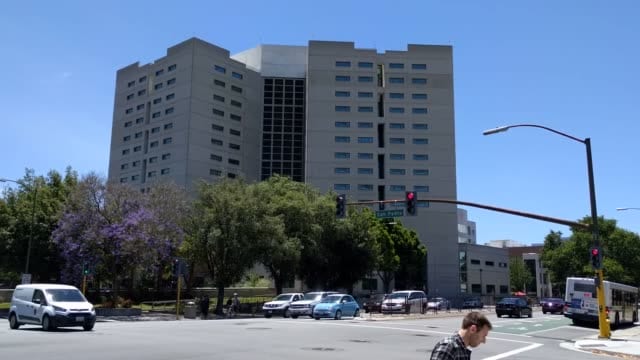On the afternoon protesters shut down Southbound 101 in San Jose, I was working in a mobile clinic parked by the local jail, where COVID-19, law enforcement and race converge in real time. Examining my patient, I paused for a few seconds, stethoscope hovering over his chest, as the whir of a helicopter passed.
My patient, a 74-year-old African American man with advanced heart failure and opioid use disorder, had missed a long-awaited cardiology appointment and four days of medicines while he was remanded to jail and then released to the street. Short of breath and in opioid withdrawal, I wondered whether the arresting officers were aware of the impact of those four days on this man’s life expectancy.
Before COVID-19, it was hard to imagine our criminal justice system could consider public health as reason to keep people out of jail. Having worked at Rikers Island in New York City and local jails, I have long been aware of the damage inflicted on the bodies and minds of incarcerated people. But in March, things changed. Health experts referred to prisons and jails as “tinderboxes of death,” and correctional officials began the process of mass releases. In Santa Clara County, nearly 1,000 individuals returned to their homes or the streets within weeks, a 30% decrease in jail census.
This decision saved lives. Jails are profoundly unsafe settings—considering the filth and overcrowding, it’s no wonder eight of the 10 largest COVID outbreaks in the United States have been in correctional facilities. Jurisdictions that avoided this fate did so with large-scale releases, empowering police to reduce arrests, and diverting those with mental illness, substance use disorders and poverty to treatment and housing.
For a doctor like me, this is cause for celebration. Not just because of reduced viral transmission but because incarceration itself threatens our communities. It should be obvious to policymakers that for both public health and racial justice, the carceral system needs to change.
This system, created to jail and impoverish black people and protect the power of white people, dates back to Reconstruction, but its pernicious effects are on full display today. This system criminalizes blackness and is the reason we’re reeling from yet another wave of police killings and witnessing stark racial differences in COVID-19 deaths.
Incarceration doesn’t rehabilitate people, but it does make them sick. Chronic conditions, infectious disease, mental illness and traumatic injury are significantly higher inside. More tragic still, the person incarcerated isn’t the only one injured. Parental incarceration increases children’s risk of poverty, drug use and legal encounters and predicts a range of health problems, including HIV, diabetes, depression and anxiety. The impact ripples through neighborhoods and lasts for generations, obstructing prosperity and creating cycles of repeat incarceration with negligible impact on crime.
And it’s likely hastened the death of the patient I’m treating today. I felt powerless watching him grasp the clinic railing as he left. Policing changes inspired by COVID—de-escalation and alternatives to arrest—have yet to be codified. As a black man on the street, he is a target for law enforcement. Chronically ill, his next experience in custody, however brief, may cost him his life. As this man, born in Jim Crow America, leaves my care, I wonder if white America has made any progress at all.
Gov. Gavin Newsom’s new budget calls for closing two prisons, which would save the state $400 million annually and redirect public funds to violence prevention. This is progress to fight racism and improve public health. It reflects growing consensus, among both health and correctional officials, that decarceration is the right move for California.
Marce Abare is a physician specializing in addiction and primary care for patients recently released from prison and jail. She previously worked at Rikers Island in New York City and currently serves as medical director of the Reentry Mobile Medical Unit, a clinical site operated by the Valley Homeless Healthcare Program at the Santa Clara Valley Medical Center.



Leave a Reply
You must be logged in to post a comment.